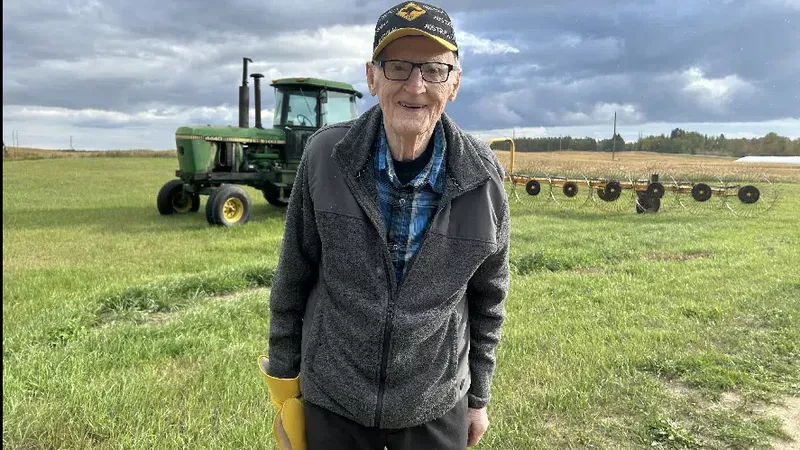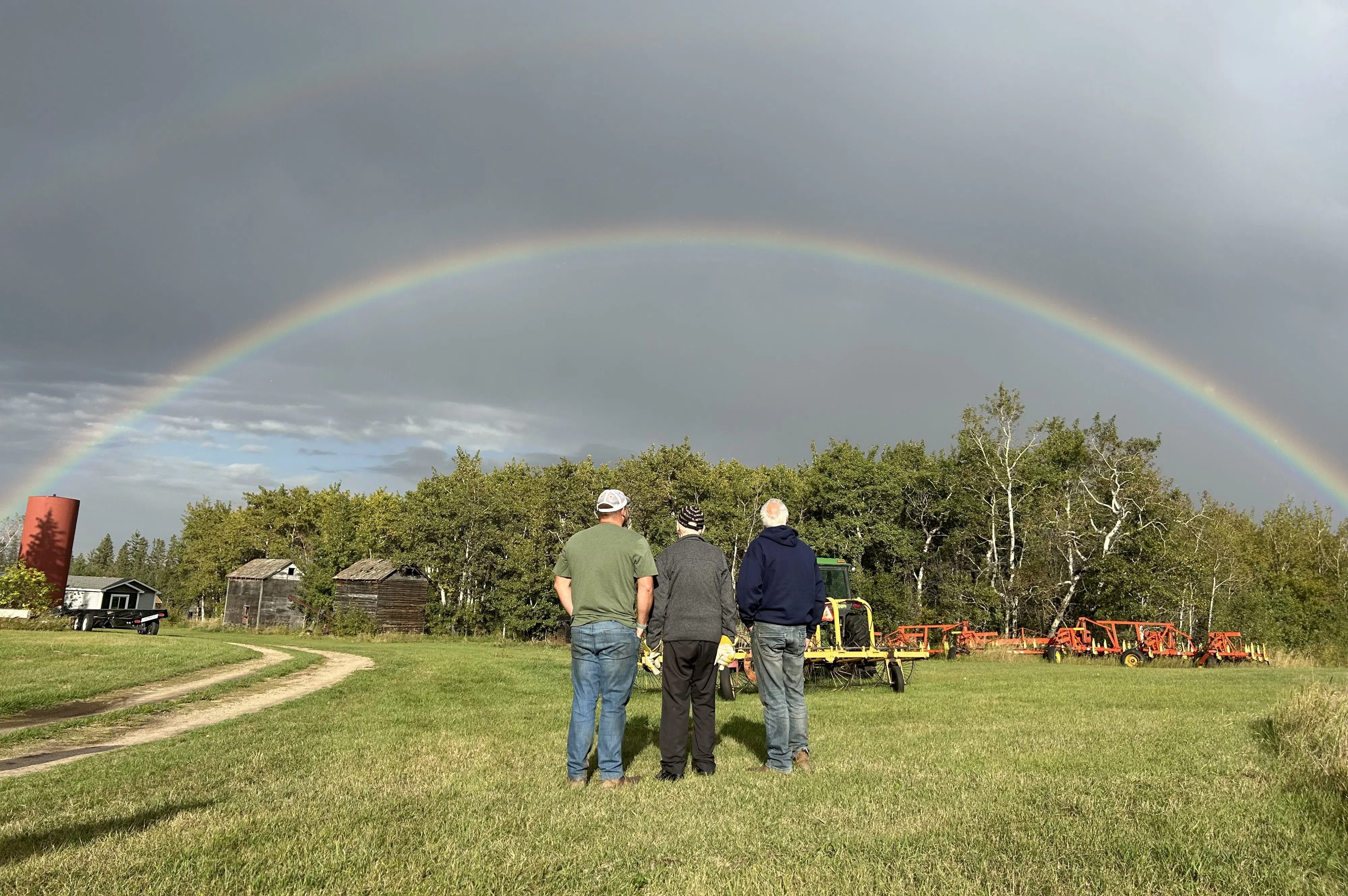
Harvesting memories: Leo Gaboury reflects on farming’s evolution
Spiritwood, Sask. — On a sunny fall day, Leo Gaboury and his grandson, Tanner, sit side by side in the cab of a combine.
You’d likely assume it would be a challenge for the 93-year-old to make his way up into the massive piece of equipment, but you’d be dead wrong.
“It’s better than a ladder because I’ve got a railing on both sides,” Gaboury exclaims, pointing to the sturdy steps leading up to the combine. “I could run up there!”
Tanner chuckles, “You always think you should be helping him, but he just climbs up there on his own, no problem!”




